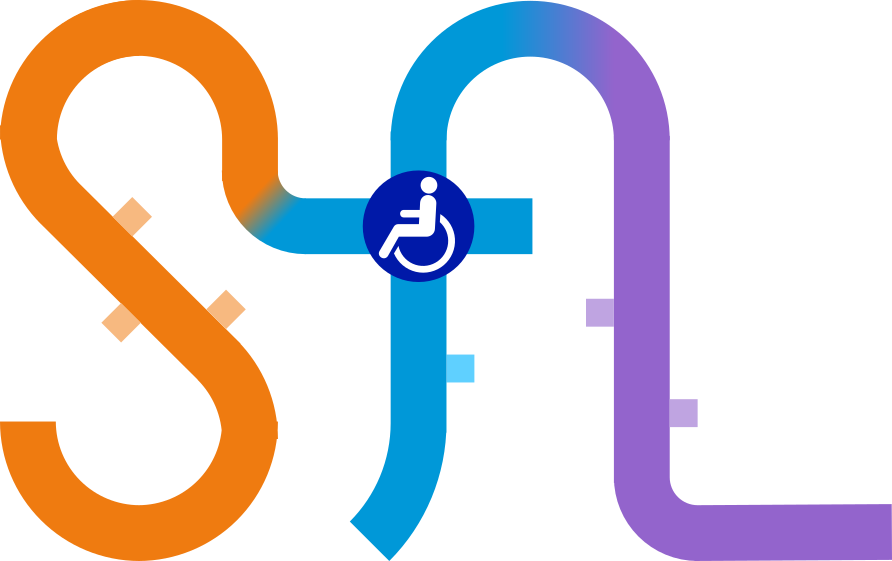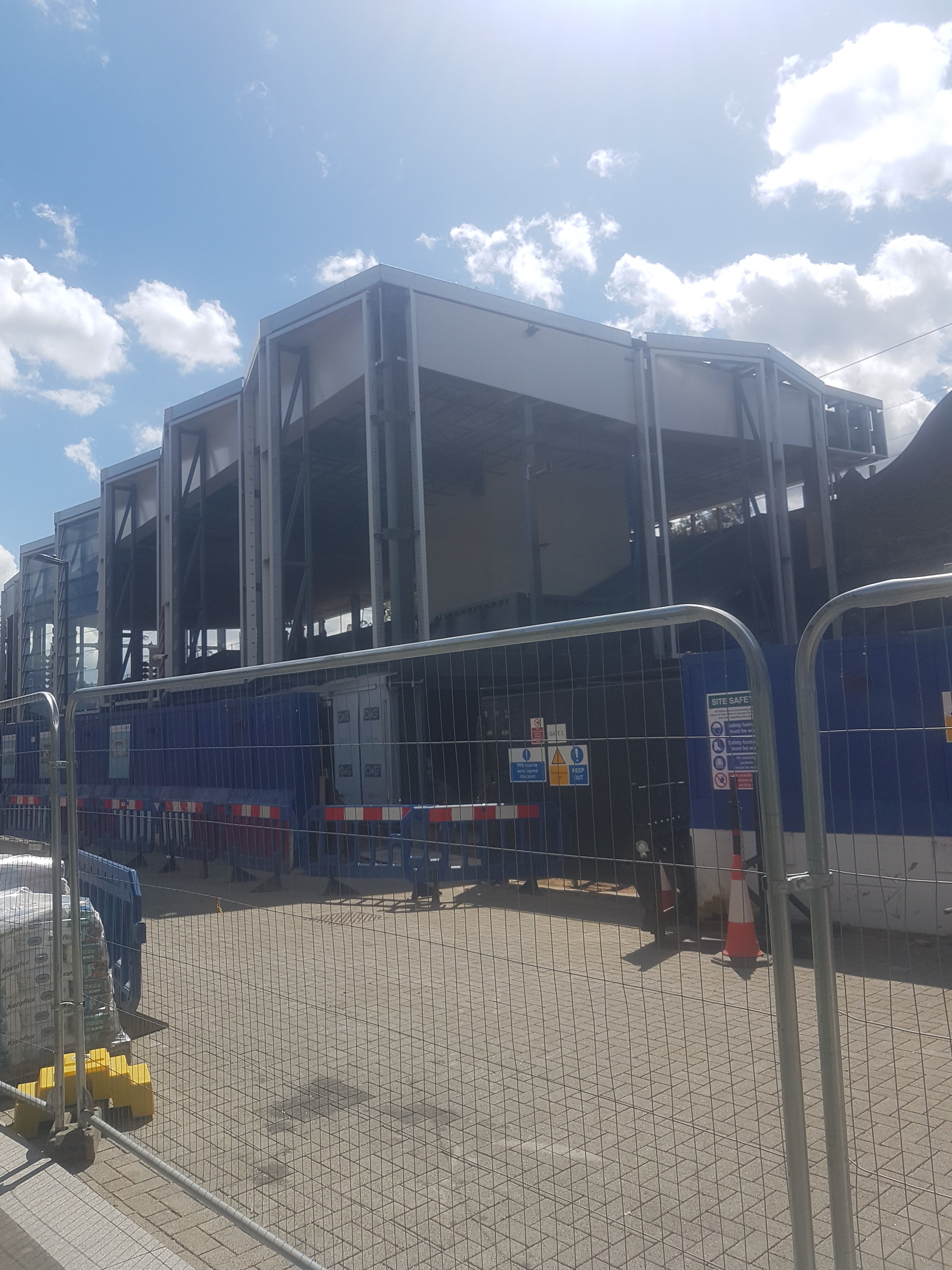Hello everyone, I am currently writing this post on a Eurostar train to Amsterdam (lengthy post to follow about the city’s, and the Netherlands as a whole’s, successes in accessibility). However, back in the UK there have been several recent developments that will improve accessibility around London. From new step-free access at Gidea Park and White Hart Lane, to funding for new stations and tracks, progress is evident. However, with every improvement in accessibility, the issue of level boarding becomes more and more apparent, with continued boarding issues across the country. With all the investment for accessible travel, why can’t we go all the way and do things right?
New Step-Free Stations
In a rapid succession, we now have two new step-free stations in the TfL network: Gidea Park (TfL Rail) and White Hart Lane (Overground). As seems to be the case these days, these announcements are seldom straightforward or particularly helpful. Like West Hampstead and Tottenham Hale currently, Gidea Park had its new footbridge open to the public for several months. Unless, of course, you required any of the lifts, which seemed to have become operational sometime last week. Not only was this opening kept completely secret, but the way I found out about it was when TfL tweeted about the lifts ALREADY breaking down.
So to recap, the scheme was “finished” without being made initially accessible, TfL did not think it was important enough to announce the opening of the lifts, and the lifts are already unreliable! This is not encouraging for the eventual opening of Crossrail. How much later will wheelchair users have to wait for those lifts, and will we have a nightmare scenario where people are getting stuck in lifts across the 10 new below-ground stations?
This brings me to the second step-free station. Both TfL and Tottenham Hotspurs tweeted the announcement of the new station building as well as the new step-free access at White Hart Lane station. However, it was then found out that the lifts were not yet operational, with sources indicating they would be working anywhere from this weekend to “Early September.” If anyone has any information on whether the lifts are working, please let me know.
TfL desperately needs to do better and improve their communication, as well as respect its disabled customers enough not to inaugurate an inaccessible station! Nevertheless, the SfL map has been updated to reflect these new changes, which you can view here.
Housing Infrastructure Fund
Earlier this month, the Chancellor announced new investment as part of the Housing Infrastructure Fund (HIF). This includes two important schemes in London: one in Canada Water and the other in Meridian Water (it was a good day for water). In Canada Water, the funds will be used to create a new entrance at Surrey Quays (Overground) as well as the construction of a brand new station New Bermondsey between Surrey Quays and Queens Road Peckham. Accessibility-wise, this project is creating a new fully-accessible station and possibly bringing step-free access to Surrey Quays (it is not clear if the new entrance will be accessible, but it would be extremely embarrassing to miss this). However one factor that I am very curious about is the platform height at both stations once the works are finished.
Currently, as I have mentioned before, level boarding in London for high-floor trains (1100 mm) is concentrated in the Thameslink core, the Heathrow Express, and the step-free stations in the core area of the Overground’s East London Line (Canonbury to Canada Water). Surrey Quays and New Bermondsey have the virtue of being in dedicated Overground track, so it will be interesting to see whether they will get high platforms like Canada Water. Of course, this will only muddle the issue of level boarding and platform standardisation. How many short-term fixes should we allow before admitting that level boarding at 1100 mm is counterproductive in the long run?
For Meridian Water, the project involves building a fourth track between Meridian Water and Tottenham Hale. Seeing as the third track between the two stations is only just about to open in 10 days, the end result is really doubling the tracks to allow for a robust and segregated suburban service. As always, I wonder how the access will be. The two new tracks will have dedicated 8 trains per hour use, their trains will be brand new as well as their platforms, and the stations will be newly step-free.
So, will there be level boarding? And if so, how? Greater Anglia has both Stadler FLIRTs (low-floor) and Bombardier Aventras (high-floor), although the Aventras are meant for frequent suburban service. And if there isn’t, this is a problem. The industry keeps harping about our Victorian infrastructure to justify the lack of independent access, but a new two-track railway without level boarding is simply injustifiable. I will eagerly wait for more information.
Boarding Fails
Moving away from London for a bit, these past few days have seen quite a bit of ramp assistance disasters. First, Paralympian Sophie Christiansen and a helpful fellow passenger were forced to keep the doors open on a SWR service after ramp assistance failed to show up.
Then, just a few days later, Jon and I had our own issue trying to board our train in Reading, which is a major and fully-staffed station. In this case, we arrived very early and notified staff, only to be forgotten about until the last minute.
These situations can be terrifying, and sadly, extremely common. Speaking for myself and Jon, we are used to holding up services and speaking out, but if someone travelling alone or not confident with rail travel would probably be put off from going through this uncertainty every time they travel. Disabled passengers have waited years for new trains that largely still don’t enable independent step-free access, passenger assistance apps that are perpetually “six months away”.
What the railway industry really needs to is commit to level boarding and draft a concrete plan to achieve standardised platforms (#PerfectPlatforms) and acquire rolling stock specifically designed for them. Anything less than this would mean that these stressful and humiliating experiences would simply roll over to the next generation.
“Oyster Zone” Expansion
Finishing up in a more positive note, this week, Radlett and Potters Bar in Hertfordshire have joined the Oyster Zone. In his new post, Transport Secretary Grant Shapps announced the expansion of Oyster and Contactless payment to these two stations. However, he makes it a point to note that although A contactless card service will be available past these stations, the Oyster card itself will not. While it is true that contactless payment is rapidly outpacing Oyster Card usage, it will be interesting to see how integrated these stations will actually be.
If payment does function seamlessly with the rest of the proper Oyster Zone network, with fare capping and fair pricing, then I have no problem eventually adding the upcoming contactless-but-no-Oyster stations to Welwyn Garden City and Luton. But it is still strange that Hertford had no such issues. Perhaps we are seeing the start of a new wider South East fare system. However, it is important that this is standardised quickly to reduce confusion. We will have to see what will happen with Reading, our local station, in December!


The October issue of Modern Railways includes an item re Funding for 20TPH on east London Line and says that Surrey Quays will become step free . Page 18
The issue also dedicates Crossrail update to Whitechapel Station which it says will have 10 lifts with opening of main entrance to Overground/ Underground next spring.
Im very curious to see whether surrey quays and New Bermondsey will get level boarding platforms. It seems like the East london line will become one of the most accessible lines in London.
News that redevelopment of Elizabeth House has been approved with provisions for lift access to Northern Line at Waterloo Station thus only leaving northbound Bakerloo Line to be dealt with. Something which given platform is only a short height above concourse level that could be done either with a ramped access or a lift for wheelchair only ?
https://www.london-se1.co.uk/news/view/10027
Bakerloo is problematic given its prominent curve. Thats why theres not even a manual ramp at the southbound station. So i dont know if they will want to add an expensive lift if the access will still be extremely difficult
Ironically TFL has just issued a new consultation on the Bakerloo Line extension which includes new proposal to build a new section of route north of Elephant and Castle Station which is shorter and straighter than the present route. So perhaps they should look at upgrading Waterloo Station as part of extension, even maybe closing Lambeth North Station with a more direct route from Embankment Station. Given Lambeth North Station is close to the reopened former Waterloo International entrance .